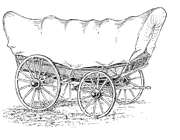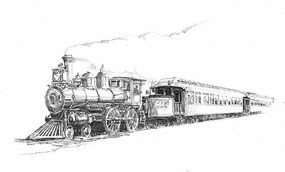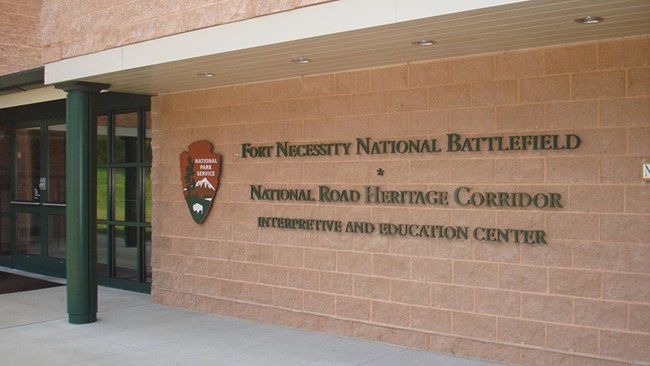Part of a series of articles titled National Road - America's First Federally Funded Highway.
Previous: The National Road
Article

During the heyday of the National Road, traffic was heavy throughout the day and into the early evening. Almost every kind of vehicle could be seen on the road. The two most common vehicles were the stagecoach and the Conestoga wagon. Stagecoach travel was designed with speed in mind. Stages would average 60 to 70 miles in one day.
The Conestoga wagon was the "tractor-trailer" of the 19th Century. Conestogas were designed to carry heavy freight both east and west over the Allegheny Mountains. These wagons were brightly painted with red running gears, Prussian blue bodies and white canvas coverings. A Conestoga wagon, pulled by a team of six draft horses, averaged 15 miles a day.

Decline of the National Road
By the early 1850's technology was changing the way people traveled. The steam locomotive was being perfected and soon railroads would cross the Allegheny Mountains. The people of Southwestern Pennsylvania fought strongly to keep the railroad out of the area, knowing the impact it would have on the National Road. In 1852, the Pennsylvania Railroad was completed to Pittsburgh and shortly after, the B & O Railroad reached Wheeling. This spelled doom for the National Road. As the traffic quickly declined, many taverns went out of business.
An article in Harper's Magazine in November 1879 declared, "The national turnpike that led over the Alleghenies from the East to the West is a glory departed...Octogenarians who participated in the traffic will tell an enquirer that never before were there such landlords, such taverns, such dinners, such whiskey...or such an endless calvacades of coaches and wagons." A poet lamented "We hear no more the clanging hoof and the stagecoach rattling by, for the steam king rules the traveled world, and the Old Pike is left to die."
Just as technology caused the National Road to decline, it also led to its revival with the invention of the automobile in the early 20th century. As "motor touring" became a popular pastime the need for improved roads began to grow. Many early wagon and coach roads such as the National Road were revived into smoothly paved automobile roads. The Federal Highway Act of 1921 established a program of federal aid to encourage the states to build "an adequate and connected system of highways, interstate in character." By the mid 1920's the grid system of numbering highways was in place, thus creating US Route 40 out of the ashes of the National Road.
Due to the increased automobile traffic on US Route 40 a whole new network of businesses grew to aid the 20th century traveler. The stage taverns and wagon stands were replaced by hotels, motels, restaurants and diners. The service station replaced the livery stables and blacksmith shops. Some of the National Road era buildings regained new life as restaurants, tourist homes, antique shops and museums. Route 40 served as a major east-west artery until the Federal-Aid Highway Act of 1956 created the interstate system as we know it today. With the opening of the interstates much traffic was diverted away.

NPS/Tom Markwardt
Part of a series of articles titled National Road - America's First Federally Funded Highway.
Previous: The National Road
Last updated: June 12, 2022